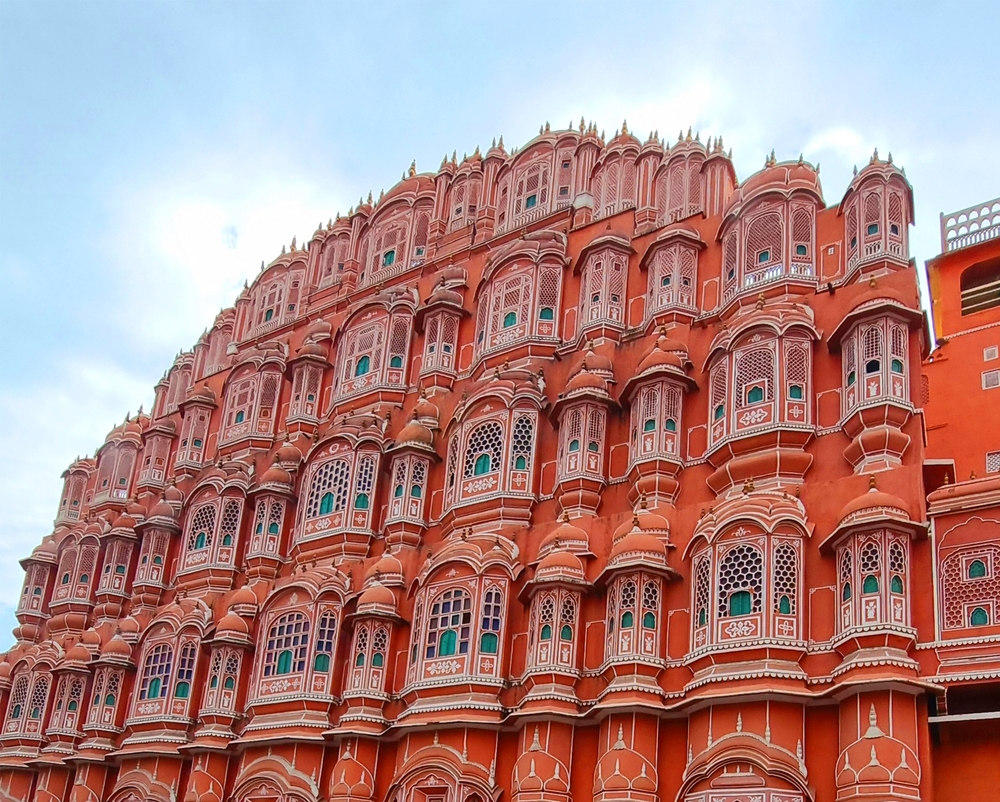Terracotta building facade are the trendy rebels of architecture—chic, eco-friendly, and just a tad rustic. The problem? Many buildings are still sporting those boring, outdated looks that shout “I haven’t updated since the ’80s!”
But don’t worry! This article will reveal the magic of terracotta, guiding you to swap the bland for a facade that’s not only beautiful but also kind to the planet. By the end, you’ll be equipped to turn your building into a contemporary gem that even Mother Nature would give a thumbs up!
Introduction to Terracotta Building facades
Terracotta, derived from the Italian words “terra” (earth) and “cotta” (cooked), is a ceramic material made from fired clay. Its use in building facades has seen a resurgence due to its unique combination of beauty, versatility, and performance. Terracotta facades are not only visually striking but also offer practical benefits such as thermal insulation and durability.
Historical Significance of Terracotta
Terracotta has a rich historical context, with origins dating back to ancient civilizations. The Greeks, Romans, Egyptians, and Chinese utilized terracotta for various architectural elements, including roof tiles, sculptures, and decorative details. This historical legacy adds cultural value to modern terracotta facades, allowing architects to evoke a sense of tradition while integrating contemporary design principles.
Table 1: Historical Use of Terracotta
| Civilization | Use of Terracotta |
| Ancient Greeks | Roof tiles, statues |
| Romans | Architectural details, bricks |
| Egyptians | Statues, decorative elements |
| Chinese | Roof tiles, pottery |
| Native Americans | Pottery, functional and decorative items |
Manufacturing Process of Terracotta facades
The manufacturing process of terracotta involves several key steps:
- Clay Preparation: A mixture of clay, water, and other additives is prepared to achieve the desired consistency.
- Shaping: The clay mixture is poured or pressed into molds to create various shapes and sizes of terracotta elements.
- Firing: The shaped clay is fired in a kiln at high temperatures, which hardens the material and enhances its durability.
- Finishing: After firing, terracotta elements can be finished with various textures and colors to achieve specific aesthetic goals.
Innovations in manufacturing, such as the use of extruded clay and advanced kiln technologies, have enabled the production of long, uniform shapes suitable for rainscreens and brise soleils.
Design Possibilities with Terracotta
Terracotta facades offer architects extensive design flexibility, allowing for the creation of unique and intricate designs. Key design possibilities include:
- Geometric Shapes: Terracotta can be shaped into complex geometric patterns, enhancing the visual appeal of a building.
- Textured Finishes: Various textures, such as fine peeled, sandblasted, and honed, can be applied to terracotta surfaces, adding depth and interest.
- Color Variations: The natural colors of terracotta can be enhanced through glazing or painting, providing a wide range of aesthetic options.
Chart 1: Design Options for Terracotta facades
| Design Option | Description |
| Geometric Shapes | Complex patterns that enhance aesthetics |
| Textured Finishes | Varied surface textures for visual interest |
| Color Variations | Customizable colors for unique appearances |
Benefits of Terracotta Building facade
Terracotta facades offer numerous advantages that make them a preferred choice in modern architecture:
- Durability: Terracotta is highly resistant to weathering, UV radiation, and graffiti, ensuring long-lasting performance.
- Thermal Insulation: The material provides excellent thermal insulation, helping to maintain stable indoor temperatures and reduce energy costs.
- Acoustic Insulation: Terracotta’s density contributes to sound insulation, making it suitable for urban environments where noise pollution is a concern.
- Environmental Friendliness: As a natural material, terracotta is eco-friendly and can contribute to sustainable building practices.
- Low Maintenance: The inherent resistance of terracotta to weathering and staining reduces the need for frequent cleaning and upkeep.
Applications of Terracotta facades
Terracotta facades can be utilized in various building types, including:
- Cultural Institutions: Many museums and galleries feature terracotta facades, showcasing the material’s ability to create striking visual effects.
- Commercial Buildings: Skyscrapers and mixed-use developments often incorporate terracotta to enhance their architectural significance.
- Residential Projects: Terracotta can also be used in residential designs, providing a unique character to homes and apartments.
Table 2: Applications of Terracotta facades
| Building Type | Application Example |
| Cultural Institutions | Museums, art galleries |
| Commercial Buildings | Skyscrapers, office complexes |
| Residential Projects | Single-family homes, apartment buildings |
Innovative Installation Techniques
Recent advancements in installation techniques have made terracotta facades more accessible and efficient to install. Key innovations include:
- Modular Panels: Lightweight, modular terracotta panels allow for quicker assembly and reduce labor costs.
- Innovative Fastening Systems: Modern fastening systems provide a clean aesthetic by hiding mechanical connections, enhancing the overall visual appeal of the facade.
- Ventilated Rainscreen Systems: These systems improve thermal performance and protect buildings from moisture damage, ensuring long-term durability.
Sustainability and Environmental Impact
The sustainability of terracotta facades extends beyond their natural composition. Many manufacturers emphasize local sourcing of materials, reducing transportation emissions and supporting local economies. For example, companies in regions with rich clay deposits produce terracotta with minimal environmental impact.
Chart 2: Sustainability Benefits of Terracotta
| Sustainability Aspect | Description |
| Local Sourcing | Reduces transportation emissions |
| Natural Material | Eco-friendly and recyclable |
| Energy Efficiency | Contributes to reduced energy consumption |
Conclusion
Terracotta building facade represent a harmonious blend of tradition and innovation in modern architecture. With their historical significance, design flexibility, durability, and sustainability, terracotta facades are an excellent choice for a wide range of building projects. As architects and builders continue to explore the possibilities of this versatile material, terracotta will undoubtedly play a significant role in shaping the future of architectural design.
By understanding the unique characteristics and benefits of terracotta facades, stakeholders in the construction industry can make informed decisions that enhance the functionality and beauty of their projects. Whether used in cultural institutions, commercial buildings, or residential designs, terracotta remains a timeless choice that resonates with both aesthetic and practical considerations.


Leave a Reply